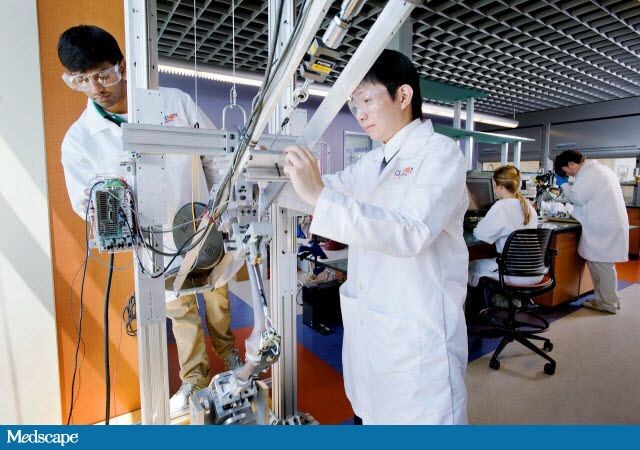http://www.medscape.com/viewarticle/769933
From Medscape Orthopedics
Unicompartmental Knee Arthroplasty: Simulator Explores Ways to Boost Success Rates
Posted: 09/04/2012
Unicompartmental Knee Arthroplasty: Exploring Ways to Improve Implant Design, Surgical Techniques, and Patient Selection
Unicompartmental knee arthroplasty (UKA) is used to treat osteoarthritis when the damage is limited to 1 compartment of the knee. The advantages of this procedure over total knee arthroplasty (TKA) include preservation of bone stock, more physiologic joint movement, improved proprioception, increased range of motion, and faster recovery time.
Despite its reported success rates (87%-98% survivorship at 10 years), UKA has not gained universal recognition as the appropriate procedure of arthritis of a single condyle. This is mainly because it is a more complex procedure and has a slightly lower success rate than TKA.
Progression of arthritis in the nonoperated compartment, polyethylene wear, aseptic loosening, fracture, and revision due to pain are some of the reported failure modes of UKA. These problems are believed to be associated with poor implant design, patient selection, alignment during surgery, and a mismatch in compliance between soft tissues and implant material. All of these factors could result in abnormal loading distributions on the knee, which are thought to accelerate degradation and lead to increased rates of clinical failure.
Our research investigates the effects of different UKA alignment and ligament configurations on the movement and contact pressure distributions on the knee. The knowledge obtained from studies performed using our device may help physicians and researchers improve implant designs, surgical techniques, patient selection criteria, or better inform the patient about possible postoperative or rehabilitation risks.
Owing to measurement limitations in patient studies, we have designed and constructed a knee simulator in which cadaveric specimens can be mounted for study (Figure). The cadaveric specimens will be obtained in collaboration with our clinical partners from the Greenville Hospital System, Greenville, South Carolina. The device has the advantages of being a reasonable simulation of the entire lower extremity in such activities as rising from a seated or crouching position, while allowing measurement of internal loadings (contact pressures) -- which could not be performed accurately in a living patient. We use a motion-tracking system that allows 3-dimensional position tracking of the knee movement during simulation. The contact pressure and area of the articulating surfaces are measured using paper-thin film pressure sensors which can be inserted in between the facets of the knee joint.

Figure. Clemson knee simulator.
We are currently working on validating the simulator to ensure its ability to capture key motion characteristics of a normal knee with artificial bones and an implant. The funding that we recently received from the Orthopaedic Research and Education Foundation in collaboration with our clinical partners will be used to obtain the cadaveric specimens. The results from the experiment will be analyzed and used to better understand the underlying causes of UKA failures, which will eventually lead to improvement in implant designs, surgical techniques, and patient selection criteria.
Research to improve knee implant design, surgical techniques, and patient selection criteria is taking place at theFrank H. Stelling and C. Dayton Riddle Orthopaedic Education and Research Laboratory, located on the Clemson University Biomedical Engineering Innovation Campus.

No hay comentarios:
Publicar un comentario